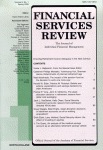Common Stochastic Trends in Pacific Rim Stock Markets
DOI:
https://doi.org/10.1016/1057-0810(95)90035-7Abstract
A study examines the common stochastic trends among national stock prices of the US and 5 East Asian countries, including Japan, Hong Kong, Taiwan, Singapore, and South Korea. Through Johansen’s (1988, 1991) maximum likelihood estimation procedure, 2 cointegration relationships are identified and the 6 stock price variables are found to share 4 common unit roots. The result suggests that the US and Taiwan markets may not belong to a common stock region containing the remaining 4 countries. The result also shows that most variables have the same adjustment speed in moving from short-run disequilibria toward the common trend. Finally, impulse response analyses suggest that short-run adjust- ments to temporary shocks occur rather quickly for some countries, and that for others, the pattern and magnitude of the adjustments may be influenced by commonalities in ethnic and other backgrounds of the countries involved. Quarterly Review ofEconomics & Finance, Fall 1994,34(3): 241-259. (Reprinted with permission of ABUInform, Copyright UMI.)
Published
How to Cite
Issue
Section
License
Copyright (c) 1995 JAI Press Inc.

This work is licensed under a Creative Commons Attribution-NonCommercial 4.0 International License.
Author(s) retain copyright and grant the Journal right of first publication with the work simultaneously licensed under a Creative Commons Attribution-NonCommercial 4.0 International License that allows to share the work with an acknowledgment of the work's authorship and initial publication in this Journal.
This license allows the author to remix, tweak, and build upon the original work non-commercially. The new work(s) must be non-commercial and acknowledge the original work.


